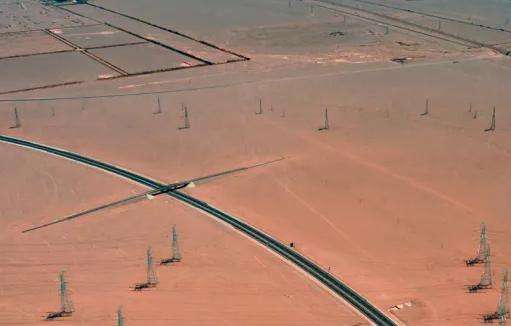Strong winds have an impact on the stability of the formwork, such as the stability of the wind ropes and the verticality of the structure. “Stress sway” of tall buildings when strong winds occur is a goal. reality. The higher the floor, the greater the relative “swing”.
Secondly, the temperature difference caused by strong winds can easily cause cold spots on the surface of the structure due to discontinuous pouring of concrete during the concrete pouring process, as well as surface cracks caused by premature removal of the formwork and spray with cold water to harden during curing. It is recommended to use a cast cure and cover the concrete surface with geotextile (cover after the concrete has finally set, as premature coating will cause the geotextile to adhere to the concrete surface).
Construction safety checkpoints by tWindy weather:
1 In strong winds above level 6, outdoor climbing and high-altitude suspended work are not permitted.
2. When building in strong winds, the formwork must include temporary wind-resistant reinforcement measures.
3. In case of strong wind level 6 or above, scaffolding assembly and dismantling operations should be stopped, removal and installation of exterior formwork at high altitude should be suspended, lifting and lifting operations in the open air must be stopped and construction elevators must stop operating, Lower the ladder cage to the ground floor and turn off the power supply.
4. In case of strong winds of level 5 or above, all formwork lifting operations must be stopped.
5. Disassembly and assembly operations of tower cranes must be stopped in case of strong winds.
How to use PKPM to calculate steel structure trusses
The dead load of the second phase refers to the role of bridge deck paving and anti-collision rails, and the corresponding should be entered in the distribution density and force options of the ALGOR+B material parameters, activate the *include option when running the calculations, if there is * in front it will be activated, if there is There is no *, this option will be disabled. Usually you just need to remember to enable the *include option when calculating the first period's dead weight. Don't forget that there is also an *include option that must be enabled for the second period deadweight.
1. There is a module in PKPM series software called STS, which is suitable for calculating various light steel roof trusses, such as steel structure workshops, structures, equipment towers, etc.
2. Another module linked toThe steel structure of the PKPM series is called STPJ; It is suitable for the calculation of heavy steel structure factory buildings, and this module is rarely used.
3. The grid-related module in PKPM is called MSGS, and can calculate various grid structures. There are only three types in the PKPM series directly related to steel structures.
The dimensions indicated in the design are calculated based on the weight of the steel. The weight of holes, cut edges and cut members is not deducted from the weight of welding rods, rivets, bolts, etc. is not added additionally. Irregular or polygonal steel plates are calculated by their circumscribed regular rectangular area. Steel grid should be distinguished between spherical nodes, steel plate nodes and other connection forms.
Steel is characterized by high strength, light weight, good overall rigidity and strong strengthdeformation, it is therefore particularly suitable for the construction of large-span, ultra-tall and ultra-heavy buildings; material homogeneity and various It has good isotropy and is an ideal elastomer, which most conforms to the basic assumptions of general engineering mechanics;
The material has good plasticity and good toughness, can undergo large deformation, and can resist dynamic loads well; the construction period is short; other The degree of industrialization is high and can be Carried out specialized production with a high degree of mechanization.
Detailed information
1. Steel Truss Connection Method
Steel trusses can be connected by welding, ordinary bolts, high strength bolted or riveted. Welding is most widely used; Ordinary bolt connections are often used in removable structures, towerstransmission and support systems; high-strength bolt connections are often used for heavy steel truss connections on construction sites; riveting is used for heavy steel trusses subject to large stresses; dynamic loads, and is now gradually being replaced by high-strength bolted joints.
2. Height-to-span ratio
The height of the steel truss is determined by economic, stiffness, usage and transportation requirements. Increasing the height can reduce the chord section and deflection, but increase the number of web elements and the height of the building. The height-to-span ratio of steel trusses is typically 1/5 to 1/12; Steel trusses with high steel strength and strict stiffness requirements should use relatively high values. The height of the triangular steel roof truss is generallylely determined by the slope of the roof; Generally when the roof slope is 1/2 to 1/3, the height/span ratio is correspondingly 1/4 to 1/6.
3. Web rod system
The web rod system of steel trusses generally adopts the shape of a chevron or a monoclinic. Herringbone web elements have fewer web elements and nodes and are widely used. In order to reduce the internodal dimensions of loaded rope elements or compression rope elements, some vertical elements are usually added. Single-pitch web members are typically arranged so that the longer diagonal members are in tension and the shorter vertical members are in compression, and are sometimes used in steel trusses with larger spans.
If it is necessary to further reduce the length of the chord and web elements, a system of subdivided web elements pcan be used when the height of the steel trusses is large and the intersections are small, type K or. a system of diamond-shaped core elements can be used. To support trusses and towers, a cross-type web rod system that can better withstand changing loads is often used, and cross diagonal rods are usually designed as tie rods. The angle of inclination of the oblique web element relative to the chord element is generally 30°.
Baidu-PKPM Encyclopedia














